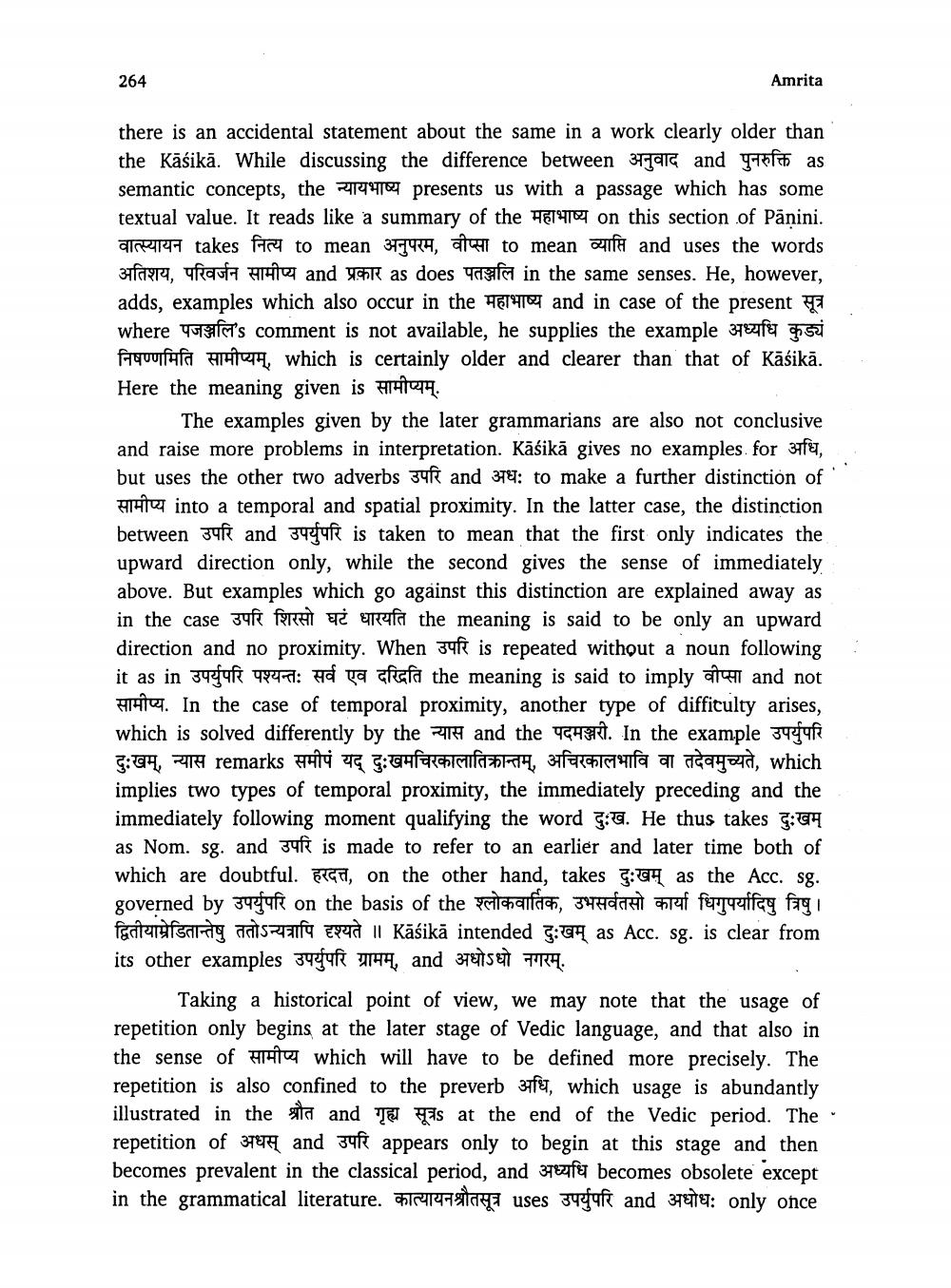________________
264
Amrita
TL
there is an accidental statement about the same in a work clearly older than the Kāśikā. While discussing the difference between Tag and oft as semantic concepts, the 1441 presents us with a passage which has some textual value. It reads like a summary of the H64107 on this section of Pāṇini. वात्स्यायन takes नित्य to mean अनुपरम, वीप्सा to mean व्याप्ति and uses the words अतिशय, परिवर्जन सामीप्य and प्रकार as does पतञ्जलि in the same senses. He, however, adds, examples which also occur in the E14T and in case of the present where ysret's comment is not available, he supplies the example 378zfe ga sai f ufifa H, which is certainly older and clearer than that of Kāśikā. Here the meaning given is सामीप्यम्.
The examples given by the later grammarians are also not conclusive and raise more problems in interpretation. Kāśikā gives no examples for 34fet, but uses the other two adverbs 34 and 3787: to make a further distinction of an into a temporal and spatial proximity. In the latter case, the distinction between 34 and 34f4f is taken to mean that the first only indicates the upward direction only, while the second gives the sense of immediately above. But examples which go against this distinction are explained away as in the case 34f f t ¿ ref the meaning is said to be only an upward direction and no proximity. When 34f is repeated without a noun following it as in उपर्युपरि पश्यन्तः सर्व एव दरिद्रति the meaning is said to imply वीप्सा and not
I . In the case of temporal proximity, another type of difficulty ar which is solved differently by the न्यास and the पदमञ्जरी. In the example उपर्युपरि G:44, 14 remarks og G:GHSnifa4, 3fachlightfa al canard, which implies two types of temporal proximity, the immediately preceding and the immediately following moment qualifying the word g:0. He thus takes G:GH as Nom. sg. and 34f is made to refer to an earlier and later time both of which are doubtful. ga, on the other hand, takes g:04 as the Acc. sg. governed by 344ft on the basis of the Mihaifa, 394a aref feruifay fergi द्वितीयानेडितान्तेषु ततोऽन्यत्रापि दृश्यते ॥ Kasika intended दुःखम् as Acc. sg. is clear from its other examples 34ef4f 4144, and 378TSET FR4.
Taking a historical point of view, we may note that the usage of repetition only begins at the later stage of Vedic language, and that also in the sense of any which will have to be defined more precisely. The repetition is also confined to the preverb 377&t, which usage is abundantly illustrated in the sita and TEJ Es at the end of the Vedic period. The repetition of 37874 and 34f appears only to begin at this stage and then becomes prevalent in the classical period, and 37eze becomes obsolete except in the grammatical literature. कात्यायनश्रौतसूत्र uses उपर्युपरि and अधोध: only once




